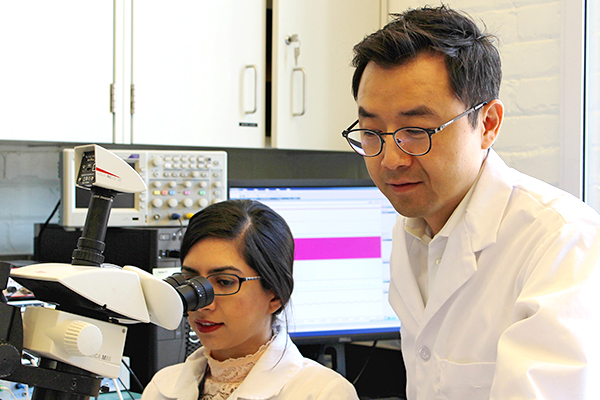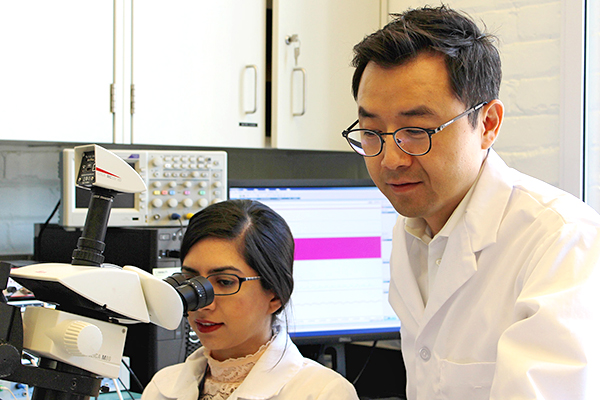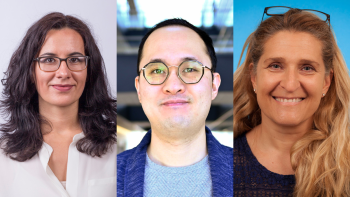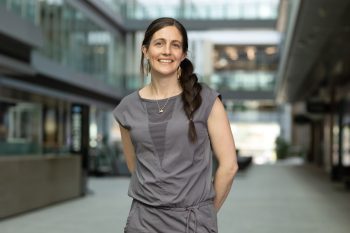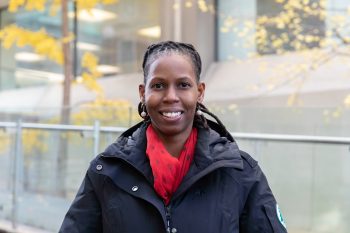Professor Paul Yoo (IBBME, ECE) has received an AGE-WELL Strategic Investment Program grant for a novel treatment to address overactive bladder disorder. The grant, issued by the Aging Gracefully across Environments using Technology to Support Wellness, Engagement and Long Life (AGE-WELL) national research network, supports post-discovery innovation that demonstrates potential for commercialization, mobilization or translation.
Overactive bladder is an incurable urinary disorder that affects 18 per cent of Canadian adults. While current treatments exist, they can have complications and limitations that include negative side-effects from medication, expensive implantable devices, invasive surgical procedures and frequent visits to the clinic.
Yoo and his team at the University of Toronto’s Institute of Biomaterials & Biomedical Engineering (IBBME) recently discovered a neural mechanism that can inhibit bladder function by applying electrical pulses to peripheral nerves far from the bladder.
“Using both experimental models and computational simulations, we have identified the specific nerve targets and the effective range of stimulation parameters that can be used to treat patients with overactive bladder,” said Yoo.
Dr. Sasha John (IBBME), a researcher at Baycrest’s Rotman Research Institute with cross-appointment to IBBME, has been collaborating with Yoo to engineer innovative methods of delivering electrical nerve stimulation to patients, while also guiding the commercialization of their findings.
Electrical nerve stimulation is currently used to treat a wide variety of chronic medical disorders, such as deep brain stimulation for movement disorders, spinal cord stimulation for pain and vagus nerve stimulation for epilepsy and depression. “Sasha and I looked at these therapies and thought about how we could engineer a way to target the bladder with a potentially non-invasive electrical neuromodulation technique,” said Yoo.
“One of the key advantages of our technology is the ability to easily access the peripheral neural targets for providing electrical stimulation,” he added. “This can facilitate user-controlled adjustment of stimulation parameters—such as the stimulation amplitude or frequency—for optimizing the therapy on an individual basis.”
Their technique has demonstrated significant promise at the pre-clinical research stage and they have already begun working with Dr. Magdy Hassouna, a clinician-scientist and urologist at Toronto Western Hospital, in designing and conducting clinical trials.
“Thanks to the AGE-WELL grant, we can now accelerate the clinical translation of our invention and achieve improved long-term therapeutic benefits in patients with overactive bladder,” said Yoo. “This project’s success will also promote the development of improved implantable devices that can used to improve at-home and even clinic-based treatments.”
“Paul and Sasha’s work is a prime example of how our Institute is at the forefront of addressing some of our most pressing health-care challenges,” said Professor Christopher Yip, director of IBBME. “Congratulations to both of them on their success and thank you to AGE-WELL for their investment in this exciting project .”
